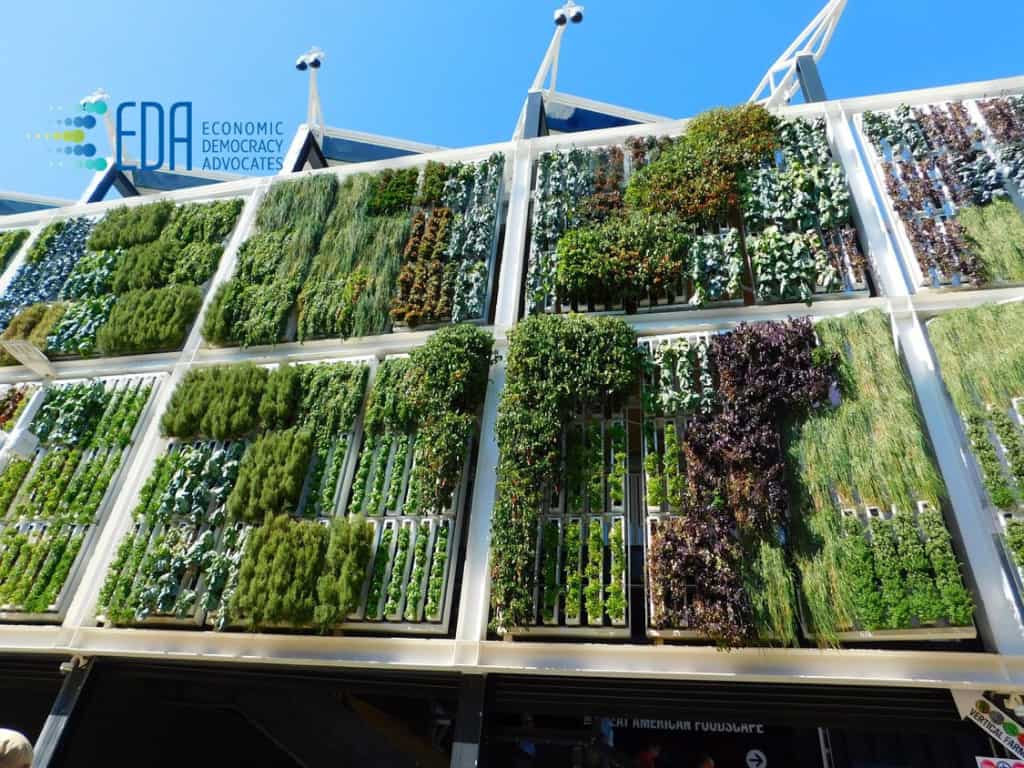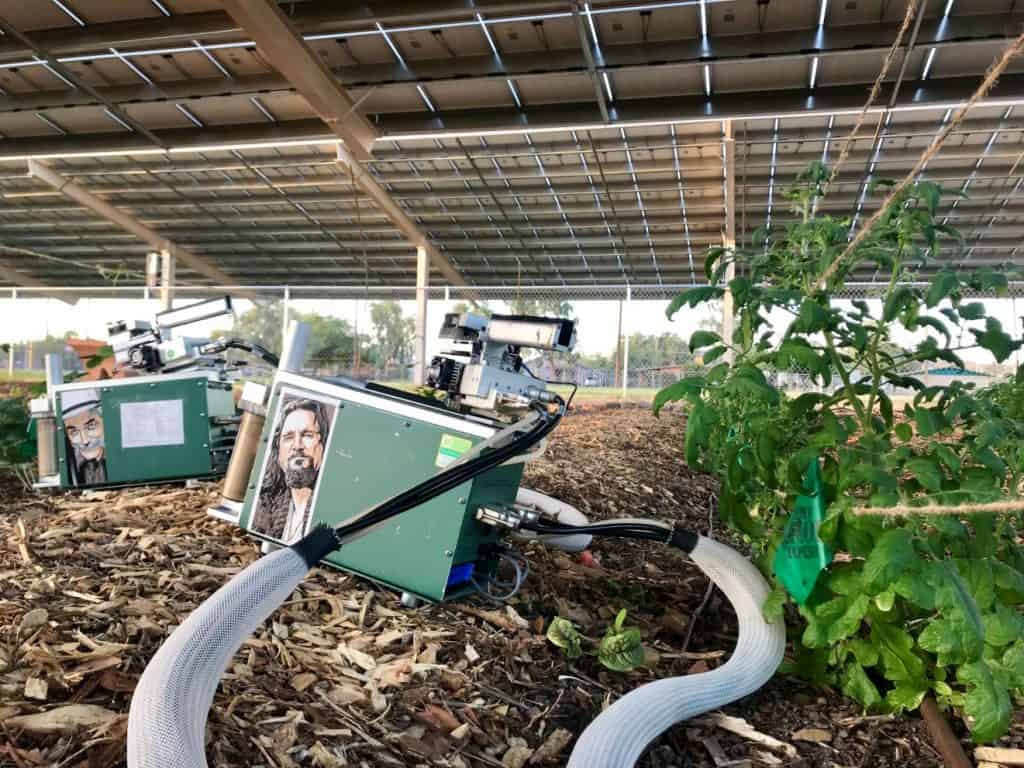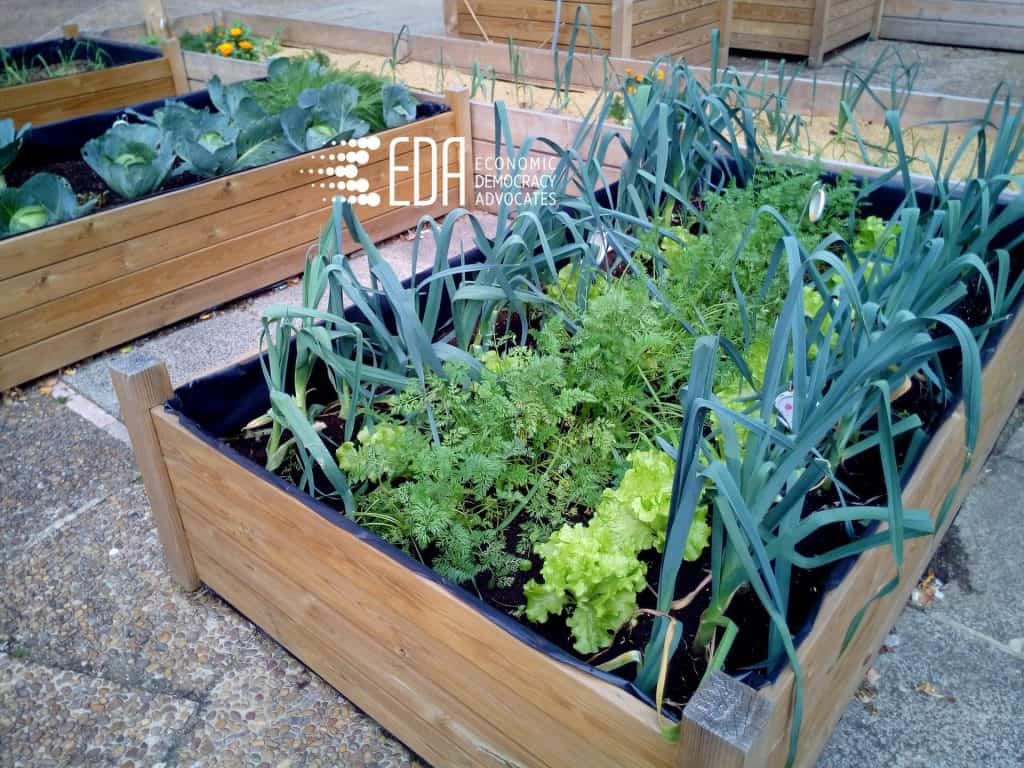The interest in growing plants vertically was put in high gear in Milan, Italy in 2011 with a project that was conceived by architect Stefano Boer to build a vertical forest. He incorporated trees into the design of his high-rise residential towers. His buildings were completed in 2015, and launched an interest in vertical farming concepts like the one pictured above, also from Milan.
Fast forward several years and we have several communities around the world experimenting with vertical farming. The notion of renovating dilapidated, abandoned factories into urban farms is an exciting concept. This article describes one project in an abandoned steel mill in Newark, NJ that is setting a new standard to bring food to urban communities.
There is an informative video about vertical farming in general, and AeroFarms specifically.
AeroFarms has put $30m into a green revolution that seeks to produce more crops in less space, but whether it’s economically viable is an open question

AeroFarms grows its greens using a nutrient-rich mist on plants anchored in a reusable cloth made of recycled plastic bottles. Photograph: Malavika Vyawahare
An ambitious, almost fantastical, manifestation of agricultural technology is expected to come to fruition this fall. From the remains of an abandoned steel mill in Newark, New Jersey, the creators of AeroFarms are building what they say will be the largest vertical farm, producing two million pounds of leafy greens a year.
Whether it even qualifies as a “farm” is a matter of taste. The greens will be manufactured using a technology called aeroponics, a technique in which crops are grown in vertical stacks of plant beds, without soil, sunlight or water.
“I ate some of the arugula here,” said New Jersey governor Chris Christie after a recent visit to a smaller AeroFarms facility in the neighborhood. “It tastes fabulous. No dressing necessary.”
The farm, built in the economically depressed New Jersey city promises new jobs, millions of dollars in public-private investment, and an array of locally grown leafy greens for sale. The company has spent some $30m to bring to reality a new breed of “green agriculture” that seeks to produce more crops in less space while minimizing environmental damage, even if it means completely divorcing food production from the natural ecosystem.
AeroFarms and other companies developing similar controlled growing climates claim to be transforming agriculture. Proponents of vertical farming call it the “third green revolution”, analogizing the developments to Apple and Tesla. They tout the potential of such technology to address food shortages as the world population continues to grow.
AeroFarms touts their products as free of pesticides and fertilizer, an attribute that investors think will attract customers who buy organic produce. “We definitely see the need for healthy food in the local area and Newark in particular,” said Lata Reddy, vice-president for corporate social responsibility at Prudential Financial, one of the investors in the project.

Is the arugula edible? Proponents say yes. Photograph: Malavika Vyawahare
But, food that is not grown in soil may not be palatable to many, even those who are opting for organic substitutes. “If you take the soil out of the system, is it a legitimate organic system?” questioned Carolyn Dimitri, director of the food studies program at New York University. The US Department of Agriculture does not consider the question of organic certification for growing methods that do not use soil, according to AeroFarms’ website.
“Urban farming is trendy,” Dimitri said. It remains an open question, she said, whether it will be economically viable. Prudential Financial has invested “patient capital” in the venture, which is used to finance social impact projects that are unlikely to yield benefits right away. There are no aeroponics projects of this scale but AeroFarms has piloted the technology at Philip’s Academy charter school in Newark, where students are served greens grown at the school.
Seventy times the yield of traditional farms
Marc Oshima, the chief marketing officer at AeroFarms, yanked open a tiny grey door in a back alley in downtown Newark that leads into an old nightclub with vividly painted walls. In 2014, AeroFarms converted the space into a research and development facility. “Out there, in nature, we don’t have control over sunlight, rainfall,” Oshima said, “here, we are giving plants what they need to thrive.”
The moist sanitized air that envelops the R&D lab is missing one ingredient: the earthiness that permeates any agricultural operation.
At the repurposed sites, AeroFarms is pushing the limits of what David Rosenberg, the company’s CEO, calls “precision agriculture”. The scheme ditches the romanticized ideal of farming, acres and acres of open fields dotted with men and women toiling in the sun, getting their hands dirty, in favor of enclosed urban spaces where engineers, electricians and harvesters mill about, wearing protective clothing, masks, and gloves.
With its multicolored LED lights, computer screens lining the walls, and faithful preservation of club decor, AeroFarms’ research facility could easily pass off as a sci-fi themed club. It makes a befitting setting for a company that is promising to increase crop yields by as much as 70 times compared to traditional field farms, without using any pesticides or fertilizers.
The fine print is that the productivity is calculated using square footage occupied and not the vertical space utilized, making comparisons with ground floor-only traditional farms fraught. And critics point out that no traditional farm that size comes with a price tag of over $30m.

The leafy greens nurtured under multicolored LED lights. Photograph: Malavika Vyawahare
Much of the funding is coming from impact investing arms of big-ticket investors like Goldman Sachs and Prudential Financial. AeroFarms has leveraged its social impact goals to attract investments, promising to create jobs in a languishing economy and supplying fresh local produce to the community in Newark.
For New Jersey, where unemployment rates have been persistently above the national average, the promise of new jobs and fresh investment has ensured buy-in from the state. Christie, visiting the smaller aeroponics facility in March lavished praise on the “public-private” partnership.
The New Jersey Economic Development Authority provided nearly $9m in incentives, stretched over 10 years, which includes a $2.2m grant under the Economic Redevelopment and Growth program and $6.5m in tax credits.
AeroFarms currently employs close to 100 people, and is promising more jobs in the months to come as the company grows. Like other companies in this space, it is relying on productivity gains to offset high cost of expensive technology and emerge as a successful business.
But even growing success isn’t a sure thing, let alone profit margins.
‘More like a factory than a farm’

A growing unit under construction in the Newark facility. Photograph: Malavika Vyawahar
AeroFarms has grown over 250 types of leafy greens and sells more than 20 varieties of greens such as arugula, kale and spinach but hopes to expand their offering in the future. The scheme imposes height constraints; as of now, everything grown at vertical farms is a type of short-stemmed leafy green. And while controlled growing allows year-round production and protects these new-age farmers from the vagaries of nature, they still contend with the possibility of crops dying from human error or technological malfunction.
Rising from the middle of what used to be a dance floor is a gargantuan growing machine about 20-feet tall. The rectangular apparatus is a stack of growing beds, each about 20-feet long. It resembles a gigantic fridge missing its outer casing, but instead of being used to store greens, they are growing inside. Inhabiting patches on the seven-tier machine, are leafy greens of all ages: seedlings, shoots and fully grown plants. Freshly minted leaves fluttering gently in an artificially conditioned breeze.
Above each bed are columns of LED lights, bathing the plants in a sharp white glow. When plants photosynthesize, they convert light of certain wavelengths into chemical energy, and store it for future use. This light does not necessarily have to come from the sun, Oshima explained.
Under the bright lights the plants appear to be embedded in crumpled soggy blankets. The use of growing mediums other than soil is not unique to aeroponics; planting seeds in cotton has been a popular idea for many a school science project. In recent years, a related technology called hydroponics, that uses water as a medium to grow plants, has caught on. But Oshima is quick to distinguish aeroponics from hydroponics emphasizing that their technology is superior. And the key to the technology, is what happens under the microfleece membrane. If peeled it would reveal bare roots enveloped by nutrient-rich mist.
Farming in artificially created conditions is itself not an entirely novel idea. Similar techniques are used in extreme environments where growing food the traditional way is not possible, including the United States South Pole Station, where researchers live in a isolated hostile conditions for months at a stretch, and the International Space Station has its own space garden deploying a growing system called Veggie.

Breaking down the process. Photograph: PR
The rationale for using similar methods in places where land has for centuries been tilled to grow food emerged at the turn of the century in response to urbanization and population growth. The world’s population will bloat to 9.7 billion by 2050 and 70% of people will reside in urban areas, according to the World Health Organisation. Using large swathes of land for growing food will not be an option, supporters of vertical farming argue.
Dickson D Despommier, a microbiology professor and a top proponent of vertical farming, sees the agricultural technology not just as a response to food crisis but also as a means of returning land that was previously used for agriculture to its natural state.
“We are just academics, we just sit here and watch these ideas grow,” Despommier said on a podcast he hosts on urban farming, marveling at the scale of the new operation.
AeroFarms has built its sales pitch to investors around more pressing and concrete concerns like land and water shortages, meeting the demand for locally grown greens, and climate change. Growing and selling locally means emissions associated with transportation are reduced. What remains unclear is how the company accounts for emissions arising from the farm’s substantial energy needs.
Vertical farming cropping up around the world

The facility is still under construction on Rome Street in Newark. Photograph: Malavika Vyawahare
In the last decade, a few bold schemes have built on this seminal idea, with the first commercial vertical farm set up in Singapore in 2012. Japan boasts of its own semiconductor factory-turned-lettuce farm, an idea that gained some traction after the Fukushima reactor meltdown in 2011 exposed the susceptibility of arable land to long term contamination. In the UK Growing Underground has converted a second world war bomb shelter in London into a hydroponics farm.
In the US, at least five new commercial vertical farming operations have emerged over the past five years that use a range of controlled growing technologies to allow year-round harvests of crops that typically have a short growing season in Michigan, and more efficient water use in California. At Ouroboros Farm in California, for example, hundreds of fish are fed organic feed, the waste produced by them is used to nourish seedlings and plants floating on raft beds above the fish tanks.
Some experts like Dimitri believe that such large urban farms are so far afield from traditional ones that “farm” may not be the word for them. “It is more like a factory than farm,” she said, “almost like broiler production, very controlled and regimented.”
“People want to be hopeful, they want a solution that works,” Dimitri said. “Some people think it is the way of the future. I think it is just another production technology, I don’t think it is going to turn agriculture on its head.”
New agricultural technologies like aeroponics are unlikely to make a dent in the global food crisis, for now. Countries which face the highest food insecurity don’t dabble in expensive new technology, and even if they do, the produce may not reach underserved populations. “It is a technology whose time has come for the rich,” Despommier argued, noting that “it is already popular in Japan, and countries in the Middle East that want to reduce dependence on food imports have also shown interest.”
Reddy was also measured in her assessment: “What we see here will not disrupt the entire farming industry but a particular niche.”
But proponents like Despommier see enterprises such as AeroFarms as a way forward. “There is no limit to what you can do,” he said, while acknowledging that one of the biggest challenges going forward will be growing other crops like rice and wheat, crops that could feed the world.
Article written by Malavika Vyawahare
This story was reported with the support of the UC Berkeley-11th Hour Food and Farming Journalism Fellowship.
Originally published in The Guardian.com, August, 2016
This Farm of the Future Uses No Soil and 95% Less Water


